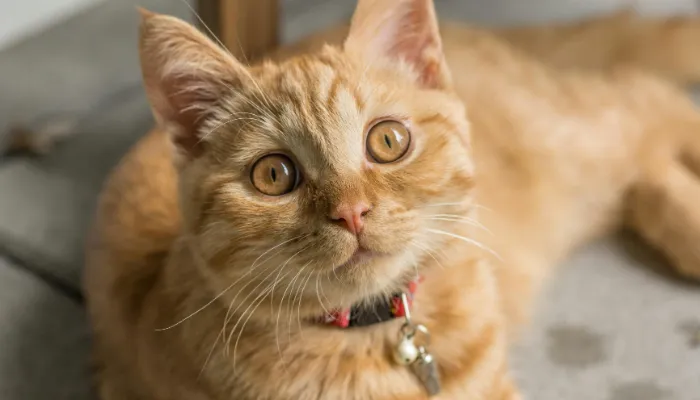Cats are some enigmatic animals which continuously leave humans pondering about what goes inside their furry heads. Unlike dogs who emotionally express themselves, cats prefer a lot more subtle and complex approach to communication.
Have you ever asked yourself, , ”How do I say “I hate you” in cat translator and still get this cat to feed me?” The scary part is that you look around, and find like-minded people. Even if cats lack a means of hatred expression, they undeniably show behaviors that depict dislike, anger, and dissatisfaction.
In this blog we will discuss how can you say I hate you in cat translator along with few other tips to communicate with your cat.

How Do Cats Communicate?
Cats use vocalizations, body language, and behavior to express their feelings. Humans rely on words, whilst cats need to be exceedingly observant on their surroundings to convey a message that is not uttered.
Essentials on Feline Communication:
- Vocal Cues Meows, growls, and hisses in their vast use signal diverse feelings.
- Body Language – Movements of the tail, positioning of the ears, and making eye contact all determine a cats mood.
- Scent Marking – Cats have scent glands can can either denote territory or possession.
- Physical Interaction – Rubbing, scratching, or biting are all ways of communication amongst cats and people.
Grasping these signals is the very first step to understand how do I say “I hate you” in cat translator? and if your feline companion is trying to express some form of anger or dislike.
Signs That Your Cat Is Annoyed
Growing disinterest or displeasure in something can be the sign of displeasure and annoyance. This step can even destroy relationships, quite possibly of friendships, marriage and family for instance. This disinterest can often stem from a constant provocation or irritation over a long period of time.
1. Annoyed Displeasing Signals
The emotion superordinate of cats is a mixture of displeasure, disregard and pride all rolled into one. Although it may be difficult to believe, their annoyance is often out of pride. Let’s say how do I say “I hate you” in cat translator? Notice these signs:
2. Hissing And Growling
Hissing or growling from a cat comes as a signal they are feeling uncomfortable or aggressive. This indicates that they feel annoyed or threatened and they wish for you to back off.
3. Swishing Or Thumping Tail
Tail movement at a slow or relaxed pace means extreme frustration. If a cat wants to lie down instead but keeps swishing or thumping their tail rapidly, that means a cat is extremely irritated.
4. Avoids You Or Hides
If a cat has started avoiding you, and is often hiding under furniture, that could mean they are worrying too much about you.
5. Sudden Biting Or Scratching
Over-excitement can lead to a cat scratching or biting. If your cat suddenly attacks while you are petting it, then that is a good sign that they might have had enough.
These actions help answer how do I say “I hate you” in cat translator? Essentially, by actions and not words.
How Cats Show Dislike Towards Humans
They can hold grudges and show extreme disgust and dislike. Unlike humans, cats do not harbor any feelings of hatred, but they certainly have their ways to express despair and annoyance.
| Behavior | What It Means |
|---|---|
| Ignoring You | Your cat is upset and doesn’t want interaction. |
| Hissing | They feel threatened or defensive. |
| Swatting or Scratching | They are annoyed and want to be left alone. |
| Running Away | They don’t trust you or feel safe. |
| Avoiding Eye Contact | They are uneasy around you. |
You might be asking, how do I say “I hate you” in cat translator? The answer can be found in these behavioral cues.
How to Mend Your Relationship With an Upset Cat
If you believe your cat is feeling angry towards you, do not panic! Here is how you can mend the wrinkles in the bond you two share:
- Give Them Space
- If your cat appears to be feeling annoyed, allow them to approach you willingly when they see fit. Refrain from insisting on interactions.
- Look At their Non-Verbal Communication
- Identify signs of discomfort and learn to respect their boundaries.
- Encourage With Treats
- Use gentle stroking and play with them as a reward for good behavior.
- Do Not Scold
- Felines are not receptive to punitive measures. Rather than reprimanding, apply soft methods of training.
- Keep Them Comfortable
- Cats can enjoy cozy hiding zones as well as a clean litter box and an area where they feel no stress.
So, by these processes, you won’t have to ask how do I say “I hate you” in cat translator – instead, you’re working towards a loving relationship with your cat.
Conclusion
While the question how do I say “I hate you” in cat translator can be puzzling, the answer exists in decoding their behavioral patterns. While it can be concluded that cats do not hate in the way humans understand the term, they do exhibit very prominent signs of annoyance, discomfort, or distrust. Learning their dialect can enable you to help create a bond that lets your pet know that they are loved and in a safe environment.
